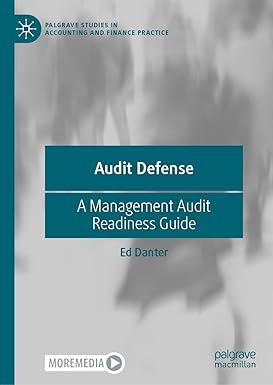Question
Question 1 Corporations are required to make quarterly estimated tax payments based on estimated tax expense. True False Question 2 Both cash dividends and stock
Question 1
Corporations are required to make quarterly estimated tax payments based on estimated tax expense.
| True | |
| False |
Question 2
Both cash dividends and stock dividends decrease the total stockholder's equity.
| True | |
| False |
Question 3
The Stockholder's Equity section of the balance sheet reports contributed capital separate from retained earnings.
| True | |
| False |
Question 4
Retained earnings do not represent a cash fund.
| True | |
| False |
Question 5
A declaration and distribution of a 20 percent stock dividend on common stock will:
| not change the total stockholder's equity | |
| Increase the assets of the corporation | |
| result in an increase in the book value of each share of common stock outstanding | |
| increase the liabilities of the corporation |
Question 6
The declaration of a cash dividend will result in a decrease in:
| cash | |
| retained earnings | |
| Contributed capital | |
| Income taxes |
Question 7
Treasury Stock is often purchased for all the following reasons except:
| to distribute at a later date in connection with an employee incentive plan. | |
| to avoid a hostile takeover. | |
| To maintain or increase market value for the company stock. | |
| To increase stockholders' book value per share. |
Question 8
To systematically accumulate cash for the retirement of bonds at maturity, a corporation may set up a bond sinking fund investment.
| True | |
| False |
Question 9
Interest on bonds must be paid in full even when the corporation operated at a loss.
| True | |
| False |
Question 10
If the market rate of interest on the day that bonds are issued is lower than the face rate of interest the bonds will sell at a discount.
| True | |
| False |
Question 11
When bonds are sold at a market price of 105, the cash received for the bonds is 105 percent of face value
| True | |
| False |
Question 12
When bonds mature, a corporation will pay the bondholders
| the current market value of the bonds. | |
| the face mount plus the original premium or minus the original discount. | |
| the face amount plus the interest accrued since the date the bonds were issued. | |
| the face amount of the bonds. |
Step by Step Solution
There are 3 Steps involved in it
Step: 1

Get Instant Access to Expert-Tailored Solutions
See step-by-step solutions with expert insights and AI powered tools for academic success
Step: 2

Step: 3

Ace Your Homework with AI
Get the answers you need in no time with our AI-driven, step-by-step assistance
Get Started


